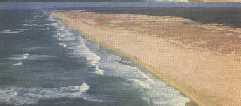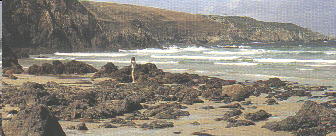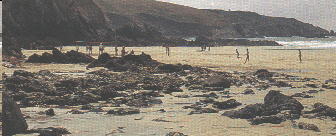The
continents are surrounded by huge areas of sea, and along stretches of coastline
provide a great variety of scenery.
Hard
rocks, such as granite and limestone, are worn away by the pounding action of
the
sea, while pebbles and sand are continuously rolled by the waves.
If
you want to walk along the seashore, always remember the following advice:
-Never
go off alone.
-Donot
forget your sandals.
-Watch
out for the waves.
-Find
out the times of the tides.
A
sandy shore (Les Landes, France)
Amsterdam,
Netherland
A
beach in Brittany (France)
at
2.00 p.m.
At midday, the rocks on the left must have been covered by
the sea, since seaweed exposed at low tide is repeatedly submerged by the tides.
There are two high tides a day, alternating with low tides. The gravitational
attraction forces of the sun and the moon are responsible for tides, and the
tidal movements are greatest at the time of full moon.
at
6.00 p.m.



